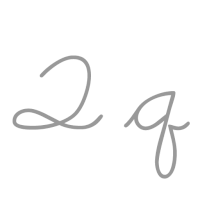Q
Q, kana q, ke thata ya bo lesome le boratato mo dithakeng tse di bopang diele. Gantsi le buiwa ka sekgowa jaana “cue" , bontsi ke “bocue". Le buiwa gape jaana “kew" kana “kue"[1]
| Q | |
|---|---|
| Q q | |
| (Bona Kotase) | |
 | |
| Tiriso | |
| Maranyane a e kwalwang | Mokwalo wa latin |
| Mofuta | Thaka |
| Teme e tholegang mogo yone | Segreek |
| Tiriso | (Tafole) /ˈkjuː/ |
| dicode | U+0051, U+0071 |
| Maemo | 17 |
| Segologolo | |
| Kago | |
| Nako | a go itsewe go fitlha gompieno |
| Bana | • Ƣ • Ɋ • ℺ • Ԛ |
| Bokgaitsadie | Φ φ Ф ק ق ܩ ࠒ 𐎖 ቀ Փ փ Ֆ ֆ |
| Pharologanyo | (Bona Kotase) |
| Tse dingwe | |
| Dithaka tse gantsi e dirisiwang le tsone | q(x) |
Metswedi
fetola- ↑ "Q", Oxford English Dictionary, 2nd edition (1989).
Merriam-Webster's Third New International Dictionary of the English Language, Unabridged (1993) lists "cue" and "kue" as current. James Joyce used "kew"; it and "que" remain in use.